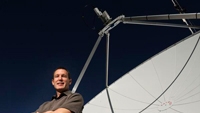Denver's KCDO: the little station that could

Amid all the negativity surrounding the industry these days, here’s a welcome TV station feel-good story.
KCDO, once a tiny VHF station in Sterling, CO, began a staged debut through June 1 on Comcast Cable’s Channel 3 in Denver, the nation’s 16th largest market. As a full-power independent TV station (one of only a few left in the country) the current FCC-mandated must-carry provision insured that its signal got a coveted spot on the cable system and immediate entry into one of the nation’s most-growing TV markets.
The tiny station’s signal began life in 1963 as a satellite of a CBS station in Cheyenne. But it was Greg Armstrong, a savvy dreamer who used to be general manager at Denver's KTVD-TV, who nurtured KCDO into what it has become.
Armstrong found the land for the tower, spent three years pursuing tower approval from the FCC and negotiated under the cable must-carry rules to get on Channel 3 in the Comcast lineup. Any broadcaster who qualifies for a full-power license is eligible for cable carriage, so the upstart station landed on Comcast, the country’s largest cable operator.
This changed everything. The newly prominent Denver station will benefit from its low-dial position on Comcast, a prime spot for viewers surfing the channels. The cable pickup gives KCDO immediate access to 500,000-plus homes in the Denver system.
To viewers stumbling across the programming, KCDO suddenly will appear like any other TV station. Local commercials will look no different on Channel 3 than they do on Channel 9. The fact that they’ll air at a fraction of the price won’t be obvious to viewers. That there’s no major network affiliation won’t be readily apparent, either. The station acquires programming from RetroTV, a supplier of 1950s-‘80s reruns.
Armstrong’s other killer advantage is that he charges only $10 to $30 each for commercials, making KCDO one of the best media ad buys in the Denver TV market. He can do that because of an extremely low overhead; the station operates out of his home with only three staffers.
Get the TV Tech Newsletter
The professional video industry's #1 source for news, trends and product and tech information. Sign up below.
In addition to Armstrong, Marcia Freeman is the traffic department, scheduling the commercials and programs; her brother Dirk Freeman is the landlord and architect of the system; and Jim McLaughlin is operations manager.
Master control is a computer on a desk in the back of the house. In January, the station built a new 1198ft tower about 16mi away near Fort Morgan, where the digital transmission facility is located.
Armstrong can’t afford to subscribe to the Nielsen ratings, but already senses growth from folks picking up the signal via antennas. “We know more people are ordering products, so there must be more people watching,” he said.
Armstrong answers the phone when viewers call, curious about the signal and shocked to get a real person on the line. What he has been hearing from some is appreciation for family-friendly material that barely hints at cleavage. “It’s not going to be a ‘Dancing with the Stars’-type audience, but we can make a living with a small, targeted audience,” Armstrong said.
His goal is 1.3 million homes in the Denver area. ”We’ll have the same distribution on the Front Range as all the big stations but without the overhead,” he said. “Now I got to figure out what we’re going to be when we grow up.”
